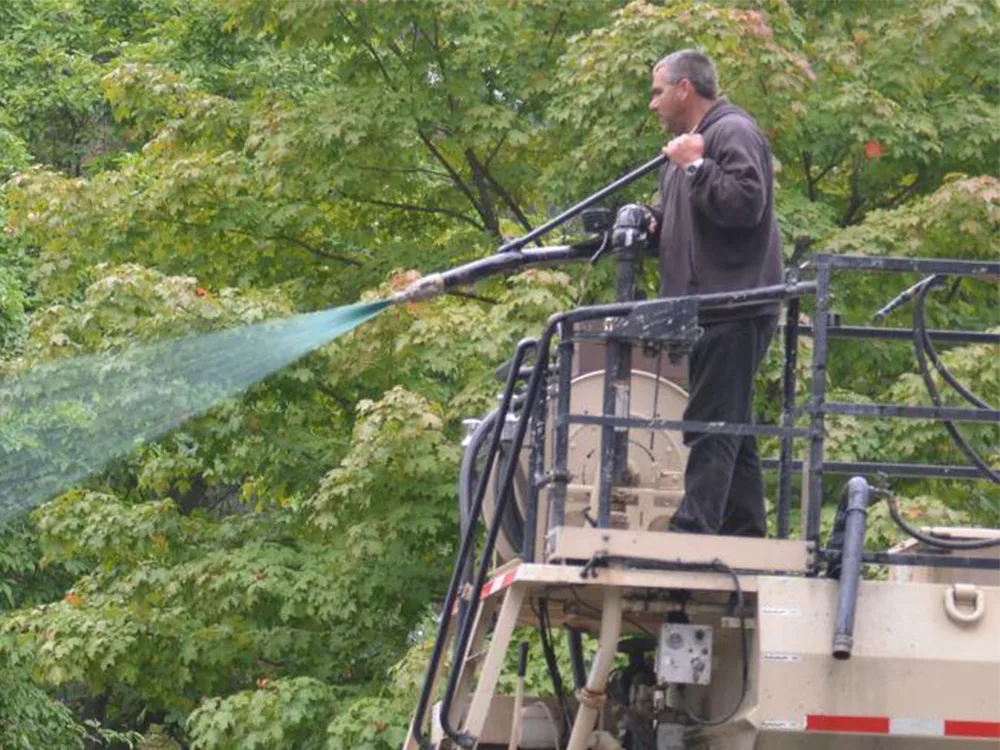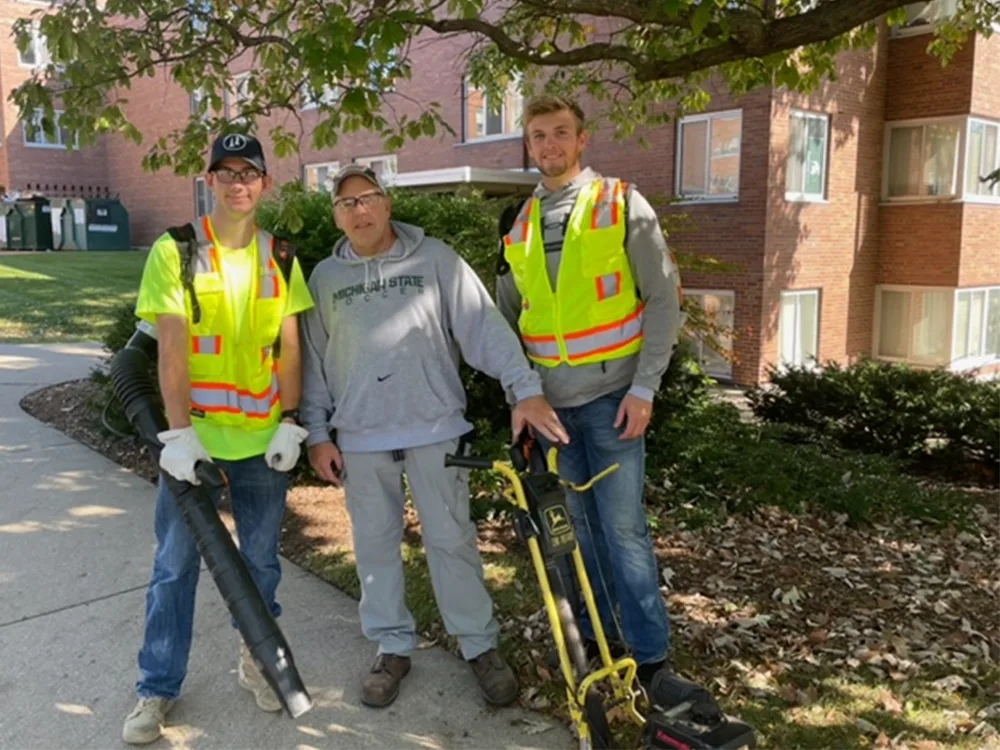HIGHER EDUCATION
Michigan State University reduced idling by 71% with Samsara
MSU Landscape Services harnessed the Samsara Connected Operations Platform to improve efficiency across their operations, achieving key goals related to: vehicle and asset recovery, inventory management and preventive maintenance, and sustainability.

Powered by the Samsara Connected Operations™ Platform
Michigan State University Landscape Services
160+ EMPLOYEES
$12M IN VEHICLES AND ASSETS
5,000 ACRES SERVICED
The Challenge
Disconnected solutions hindered efficiency and asset management
Michigan State University (MSU) Landscape Services, a top higher education institution, needed an easy-to-use and accurate solution to improve operational efficiency and asset management. Their operations span 5,000 acres across 16 satellite locations, which made tracking equipment and coordinating tasks with their previous solution a significant challenge. Manual processes for inventory audits were also time-consuming and prone to inaccuracies, requiring teams to spend hours locating equipment across campus. The lack of real-time visibility also impacted emergency response times and the ability to efficiently deploy resources during critical events like snow removal.
“We’re tasked with being good stewards of the money we’re given to maintain the campus. Samsara helps us do that, which in turn helps us ensure that we’re giving students the best experience.”
MATT BAILEY
Landscape Services Manager
The Solution
An integrated platform for enhanced efficiency, accountability, and sustainability
MSU partnered with Samsara after researching different companies and conducting a thorough beta test. The team found that the installation of Samsara software and hardware was simple and quick to implement, allowing them to quickly get systems up and running sooner. Samsara also offered robust support for customizing installations, even for equipment not originally intended for Samsara technology. Now, Samsara provides real-time data monitoring, customizable alerts, and comprehensive reporting, addressing challenges across various departments.

Vehicle Telematics
Achieving $60,000 in annual savings through reduced idling and improved productivity
MSU uses Samsara telematics to track equipment usage and idling in real time, leading to significant resource savings; as a result, MSU reduced idling by 71%, saving $60,000 a year. Samsara also provides PTO run time data, allowing supervisors to see when equipment like mowers are actively being used versus just being transported. This led to accountability conversations and a marked increase in productivity, reducing labor and fleet needs.
LEARN HOWAsset Tag
Protecting $1 million in assets and simplifying asset recovery
By implementing Samsara Asset Tag on over 200 pieces of equipment, including valuable items such as bulldozers and smaller hand tools, MSU has protected approximately $1 million in capital assets (assets worth $5K+) from theft and loss. This improved asset tracking has been a huge help in locating equipment, significantly reducing time spent searching for misplaced items.
LEARN HOW

![]() Platform
Platform
Automating preventative maintenance and optimizing resource management
Samsara's open API and customizable reporting features have been instrumental in automating workflows, improving preventative maintenance, and enabling data-driven insights. As a result of integrating Samsara with their maintenance software, their teams achieved a 30% increase in hours between PM cycles and saved 3-4 hours per week of manual data checking.
Learn more
![Case Study Row Icon [platform]](https://images.ctfassets.net/bx9krvy0u3sx/42gm9RkWBtpCuKx3YRHebY/d4261c08fdc2f5213e3a3014db3f6b83/electrification_report.png?w=2160&h=2160&fm=webp&q=80)